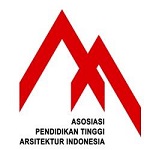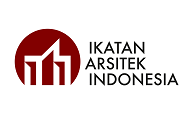The Influence of Community Behaviour on the Characteristics of Houses in Tanjung Pering Village
Abstract
ABSTRAK: Penelitian ini menyelidiki bagaimana nilai-nilai lokal, khususnya kegiatan ekonomi seperti produksi kerupuk (Kerupuk), memengaruhi karakteristik arsitektur rumah di Desa Tanjung Pering. Produksi kerupuk, yang merupakan mata pencaharian yang diwariskan dari generasi ke generasi, secara signifikan membentuk identitas budaya masyarakat dan desain bangunan. Penelitian ini bertujuan untuk mengkaji dampak praktik ekonomi lokal terhadap desain arsitektur, dengan fokus pada fungsi, estetika, dan pemilihan bahan. Pendekatan fenomenologis kualitatif digunakan dengan mengumpulkan data melalui wawancara dengan penduduk untuk memahami warisan budaya dan mata pencaharian turun-temurun. Hasil penelitian menunjukkan bahwa kondisi sosial-ekonomi dan kebiasaan lokal sangat memengaruhi karakteristik arsitektur di Desa Tanjung Pering. Pengaturan ruang, desain struktur, dan pemilihan bahan semuanya disesuaikan untuk mendukung kegiatan produksi kerupuk. Dapur sering ditempatkan di bawah atau di luar rumah untuk mempermudah produksi, sementara peralihan dari kayu tembesu ke beton mencerminkan keterbatasan ekonomi dan kelangkaan bahan. Penempatan strategis jendela di bagian depan rumah meningkatkan sirkulasi udara, yang sangat penting di iklim tropis daerah tersebut. Studi ini menunjukkan bagaimana praktik ekonomi dan nilai-nilai budaya bersatu membentuk identitas arsitektur desa. Penelitian ini memberikan wawasan tentang bagaimana warisan budaya dan kegiatan ekonomi memengaruhi arsitektur vernakular. Dengan mengkaji hubungan antara mata pencaharian lokal dan desain bangunan, penelitian ini menawarkan panduan berharga untuk mengembangkan praktik arsitektur yang sensitif terhadap budaya yang dapat melestarikan identitas lokal sekaligus menjawab kebutuhan kontemporer.
ABSTRACT: This study investigates how local values, especially economic activities like cracker (Kerupuk) production, influence the architectural characteristics of houses in Tanjung Pering Village. Cracker production, a long-standing livelihood passed down through generations, significantly shapes the community’s cultural identity and building designs. This research aims to examine the impact of local economic practices on architectural design, focusing on functionality, aesthetics, and material selection. A qualitative phenomenological approach was employed, gathering data through interviews with residents to understand cultural heritage and hereditary livelihoods.
The findings indicate that socio-economic conditions and local customs profoundly shape architectural characteristics in Tanjung Pering Village. Spatial organization, structural design, and material selection are all adapted to support cracker production activities. Kitchens are often placed below or outside houses to facilitate production, while the shift from tembesu wood to concrete illustrates economic constraints and material scarcity. The strategic placement of windows on the front facades improves air circulation, which is essential in the region’s tropical climate. The study highlights how economic practices and cultural values combine to define the architectural identity of the village.
This research provides insights into how cultural heritage and economic activities influence vernacular architecture. By examining the relationship between local livelihoods and building design, the study offers valuable guidance for developing culturally sensitive architectural practices that preserve local identity while addressing contemporary needs.
Keywords
Full Text:
21-30 PDFReferences
Y. Zhang and W. Dong, "Determining minimum intervention in the preservation of heritage buildings,"
International Journal of Architectural Heritage, vol. 15, no. 5, pp. 698-712, 2021.
L. Prima, F. Amalia, A. Ulfa, M. Berlian, F. P. Aziz, and N. Rahmadhino, "Analysis of the strengths and
weaknesses of burai tourism village in ogan ilir regency," Archvisual: Jurnal Arsitektur dan Perencanaan,
vol.4, no. 1, pp. 1-8, 2024.
A. Asadpour, "Defining the concepts & approaches in vernacular architecture studies," Nature: National
Academic Journal of Architecture, vol. 7, no. 2, pp. 241-255, 2020.
V. G. Martinez, G. Ma, P. Pellegrini, and M. R. Costa, "Vernacular architecture and cultural identity in
shrinking rural settlements," ACE: Arquitectura, Ciudady Entorno, 2022.
S. Athira, P. Amritha, and K. Chithra, "Traditional building knowledge systems-a path to sustainability," in
IOP Conference Series: Earth and Environmental Science, vol. 1210, no. 1. IOP Publishing, 2023, p.
L. Prima, F. Amalia, A. Arief, Q. Harjuniertha, M. Agil, and A. Ali, "Performances development of traditional
settlement in skonjing village, ogan ilir, south Sumatra," Archvisual: Jurnal Arsitektur dan Perencanaan,
vol. 3, no. 2, pp. 79-87, 2024.
G. Erfani, "Reconceptualising sense of place: Towards a conceptual framework for investigating individual-
community-place interrelationships," Journal of Planning Literature, vol. 37, no. 3, pp. 452-466, 2022.
L. Prima, T. Lussetyowati, and J. Adiyanto, "Developing of village's heritage tourism planning through
integrated of foodscape and landscape architecture at lahat regency," Sinektika: Jurnal Arsitektur, 2024.
M. Rosaleny Gamon et al., "The role of vernacular architecture in the future cities," Proceedings-3rd Valencia
International Biennial of Research in Architecture, VIBRArch, pp. 612-622, 2023.
M. I. Alhari, D. Witarsyah, R. A. Nugraha, H. Nuraliza, S. F. Azzahra, and K. A. Rismadewi, "Developing
it strategic transformation of smart village concept for indonesian village model," in 2022 International
Conference Advancement in Data Science, E-Learning and Information Systems (ICADEIS). IEEE, 2022,
pp. 1-6.
S. A. Effendi, E. G. Sukoharsono, L. Purwanti, and Rosidi, "Building partnership or competition: Village
business sustainability in indonesia," Sustainability, vol. 15, no. 18, p. 13703, 2023.
L. Wan, E. Ng, X. Liu, L. Zhou, F. Tian, and X. Chi, "Innovative rammed earth construction approach to sustainable rural development in southwest china," Sustainability, vol. 14, no. 24, p. 16461, 2022.
P. Gibas, "Between roots and rhizomes: Towards a post-phenomenology of home," Transactions of the
Institute of British Geographers, vol. 44, no. 3, pp. 602-615, 2019.
U. Flick, "The sage handbook of qualitative research design," 2022.
M. Siegrist, "Trust and risk perception: A critical review of the literature," Risk analysis, vol. 41, no. 3, pp.
-490, 2021.
A. Ashadi, R. D. Nur'aini, A. Anisa, F. Lissimia, and S. N. A. Wahab, "Understanding changes in
architectural form-function-meaning relations: in the case of kampong aquarium, jakarta, indonesia."
International Journal of Built Environment and Scientific Research, vol. 8, no. 1, pp. 81-92, 2024.
D. Rero and E. Maryani, "Analysis of the sa'o atalaki traditional house, ende regency in a geographical spatial
perspective," Jurnal Geografi, vol. 14, no. 2, pp. 245-251, 2022.
A. Rajendra, "Contemporary challenges of the indonesian vernacular architecture in responding to climate
change," in IOP Conference Series: Earth and Environmental Science, vol. 824, no. 1. IOP Publishing,
,p. 012094.
T. Hong, Y. Chen, X. Luo, N. Luo, and S. H. Lee, "Ten questions on urban building energy modeling,"
Building and Environment, vol. 168, p. 106508,2020.
K. Widyawati, N. Suryani, F. M. Pratama, and R. Rejoni, "The space pattern and community socio-economic
transformation in the taman kencana bogor," in 1st International Conference on Folklore, Language,
Education and Exhibition (ICOFLEX 2019). Atlantis Press, 2020, pp. 193-197.
W. Sunarya, A. Avenzoar, and H. P. Utomo, "Defining wellness-focused design for rural tourism: study case
of penanggungan village," in IOP Conference Series: Earth and Environmental Science, vol. 1351, no. 1.
IOP Publishing, 2024, p. 012007.
Z. H. Mohson, Z. A. Ismael, and S. S. Shalal, "Comparison between smart and traditional building materials
to achieve sustainability," Periodicals of Engineering and Natural Sciences (PEN), vol. 9, no. 3, pp. 808-822,
DOI: https://doi.org/10.26618/j-linears.v8i1.17181
Copyright (c) 2025 Jurnal Linears

This work is licensed under a Creative Commons Attribution-NonCommercial-NoDerivatives 4.0 International License.

Jurnal Linears is licensed under a Creative Commons Attribution-NonCommercial-NoDerivatives 4.0 International License.










